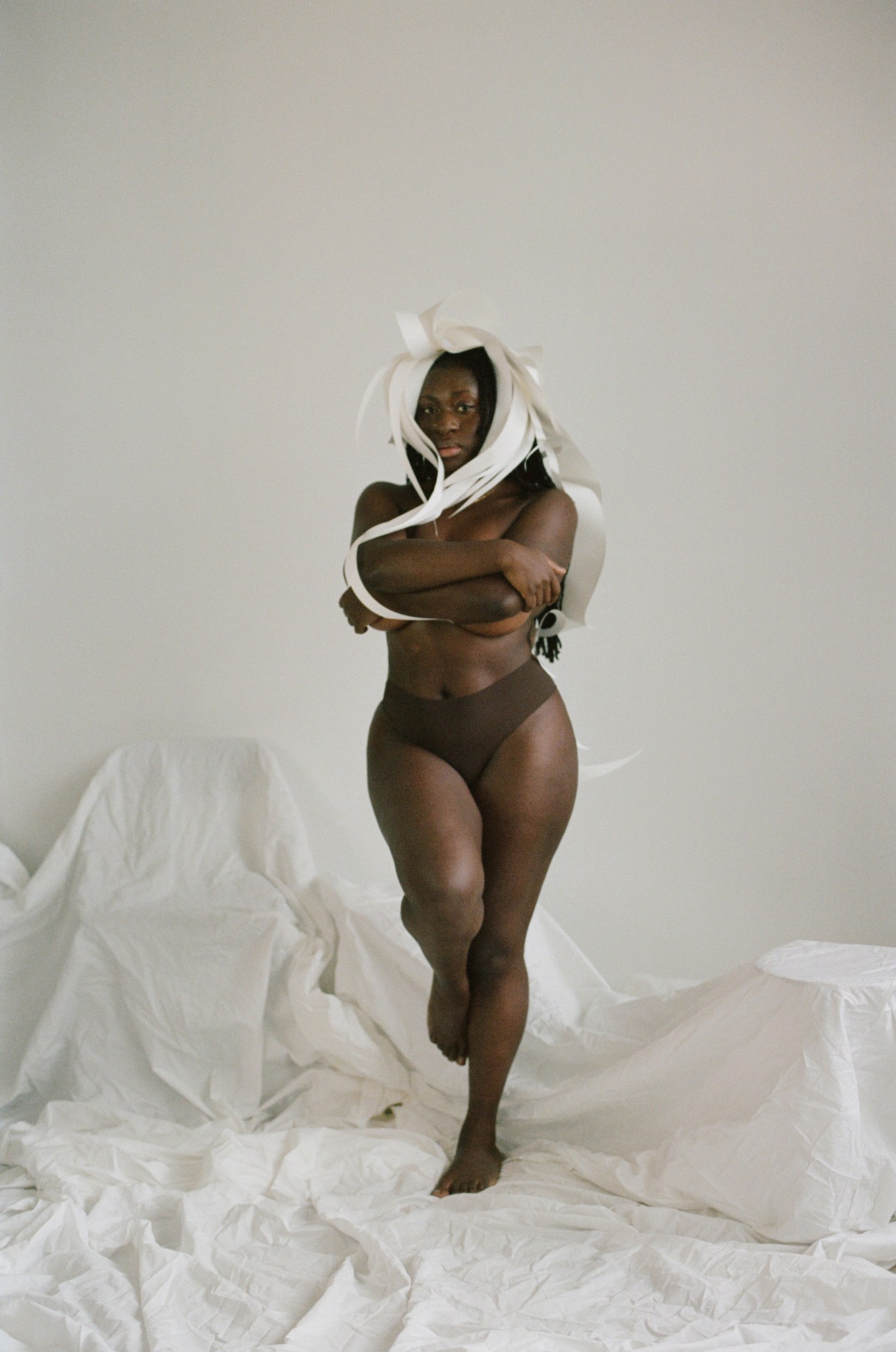The BTF100 is a list of Black creatives, artists, and tastemakers who are globally disrupting the art and media landscape. These individuals, co-curated by the teams at both Blacktag and i-D, sit across multiple disciplines, industries, and spaces, unapologetically defying stereotypes and clashing traditions to make space for new ideals.
Each week, for the next four weeks, we’ll be dropping 25 names from the list alongside special features delving deeper into what it means to centre, celebrate, and create equity for Black voices. Head over to the BTF100 microsite for the full list!
In a world where Black women are so often copied, commodified, and uncredited, artist Karina Sharif seeks to create offerings that are “entirely for us alone,” she says. For the past few years, she’s been exploring a creative framework that centers Black women and non-binary femmes, blending photography, set design, and sensual paper sculptures worn on the body. “This work is my way of loving, listening, and cherishing,” she shares. “It makes me feel full.”
After studying at Brooklyn’s Pratt Institute—a prestigious art school located in Clinton Hill—she began her career as a stylist, but soon turned to fashion design, eventually developing her own art practice in a search of more flexibility. For Karina, the form of storytelling she’s chosen is an opportunity to serve as a source of “self-representation devoid of white and male domination,” as she puts it. “I define success for myself to mean having a sense of freedom. Freedom to create on my terms, in my way, and for my people.”
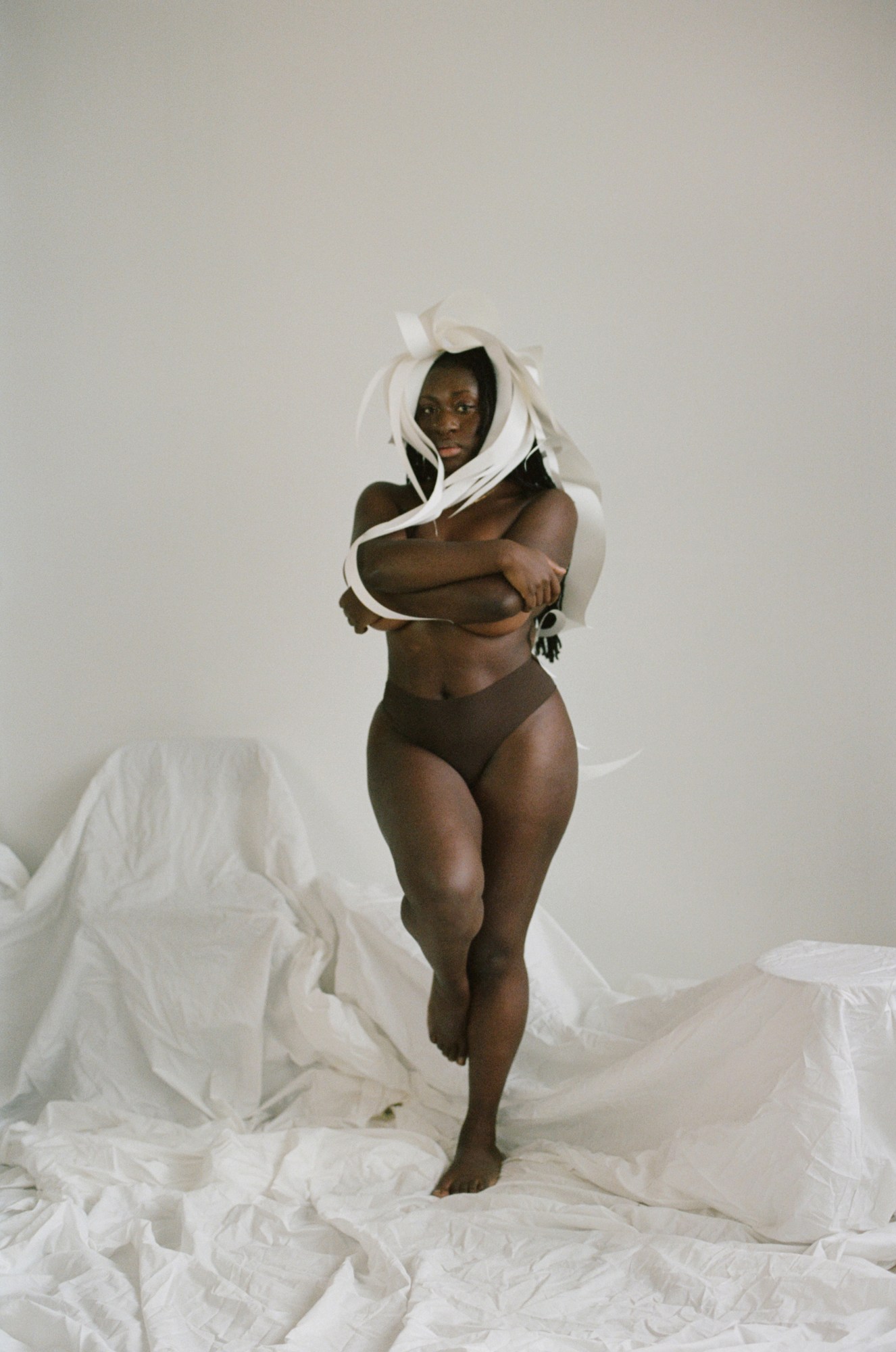
What purpose or force drives you to create your work?
I feel driven to continue creating when Black womxn seek me out to tell me the work has made a difference in their lives. It is such a fulfilling feeling. This work makes my soul happy. I just find it so beautiful to sit and revel in the beauty of black womxn.
How would you describe Black culture’s influence on popular culture?
Black culture is pop culture. We are the blueprint for everything pop culture feeds on, and we do it so naturally, so freely. It is innately within us. If Black people and Black culture were not present there would not be “pop culture” for our society to engage with.
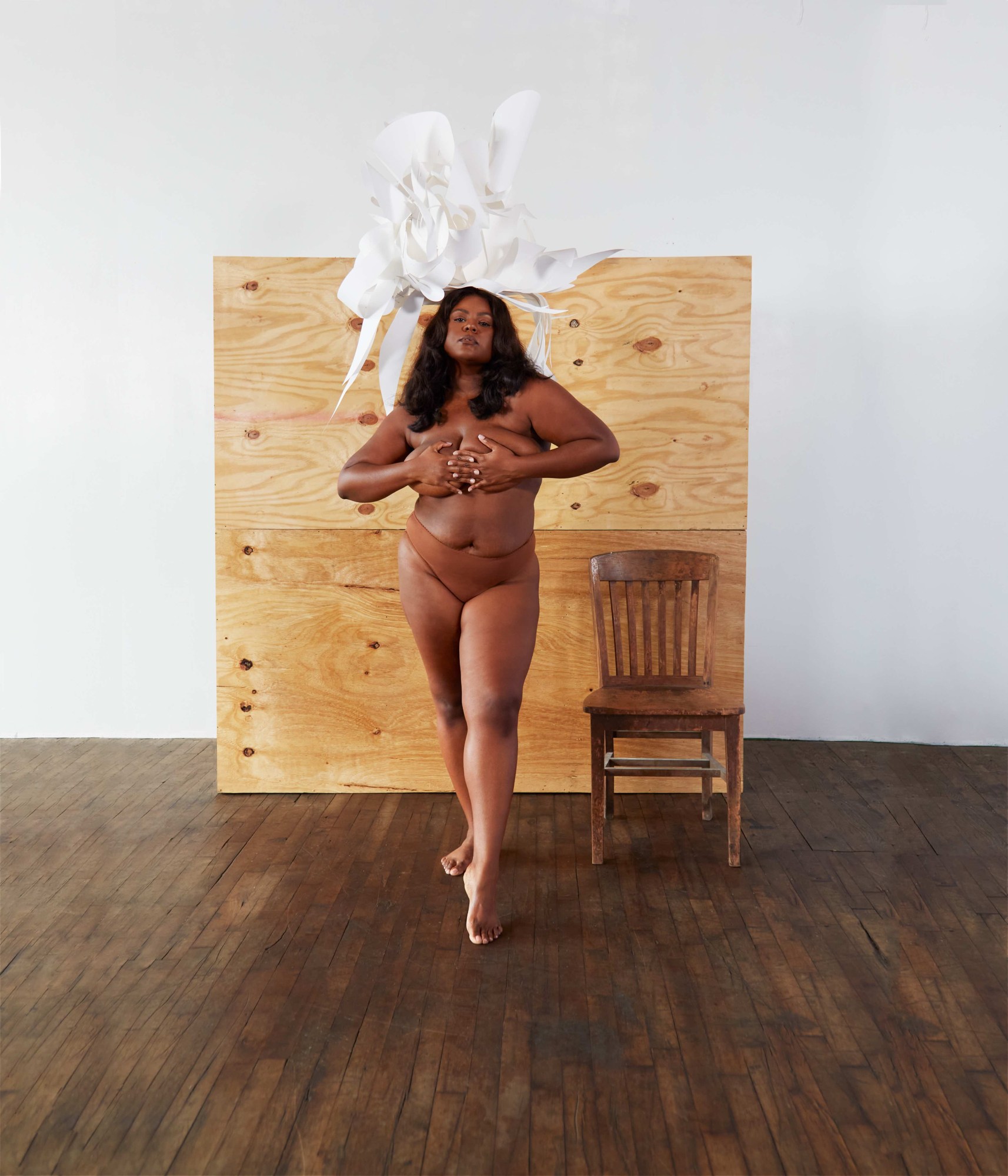
What does the community you’re a part of mean to you and how do you want to give back to it?
My community is everything. It is home, it is peace and a source of constant inspiration. I hope to give back by including my community in my work but also by offering interactive classes and art therapy in the future.
Which peers do you look to for guidance and inspiration?
I look to my Black womxn friends in the arts always. I love talking with Dana Scruggs, a close friend, about being Black and a womxn in the creative force and navigating oppression and misogynoir. I love the work she creates and how beautifully she articulates her vision. I also love Caitlin Cherry’s work. I find it inspiring to watch her career blossoming so beautifully and wildly. I tend to think of Black womxn and our minds, [our] voices, as a map. All we need to do is connect in order to continually see and contribute to the vision.
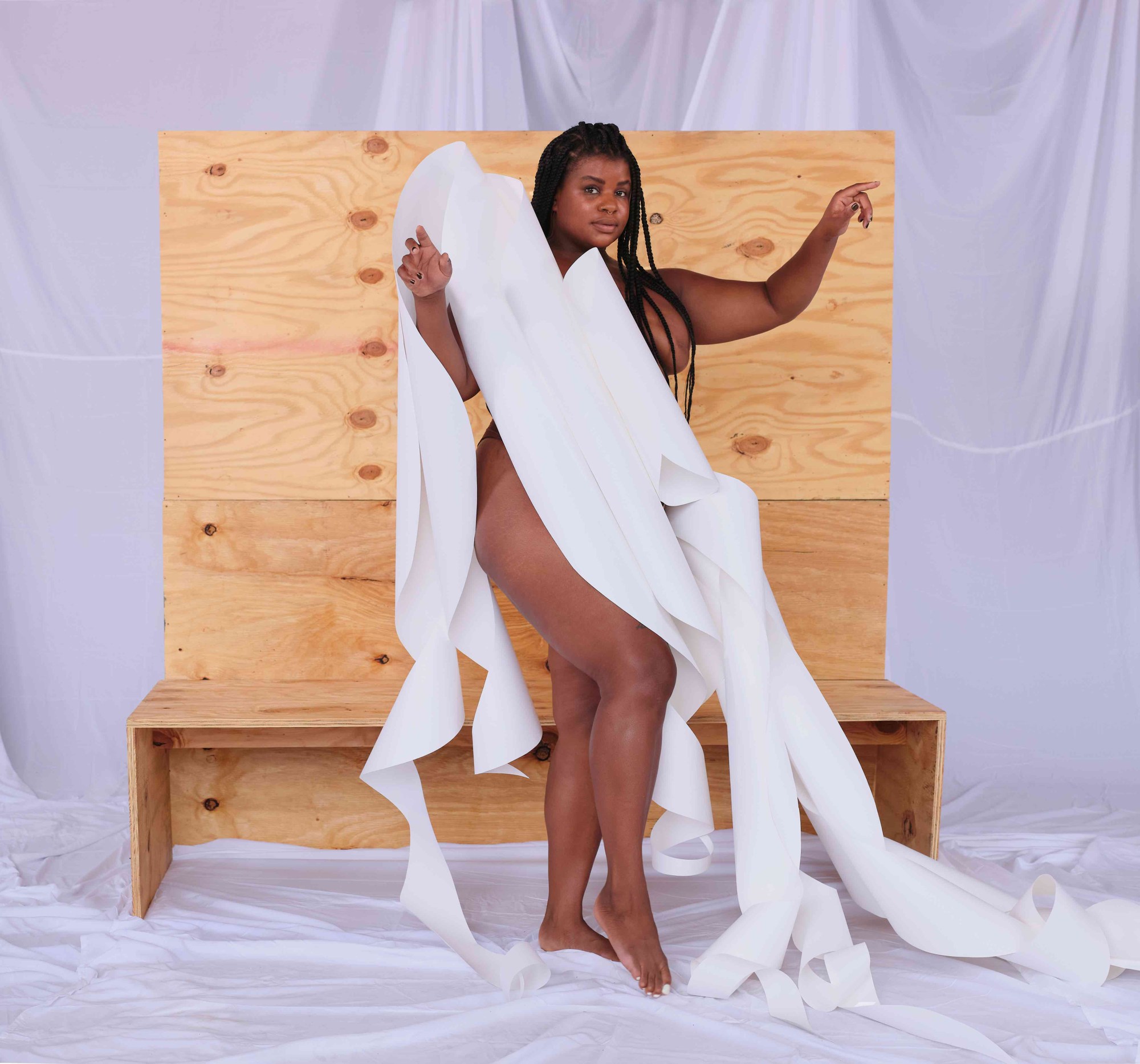

What ground is left to cover in representing voices like yours in the arts and in media?
Until I can walk into any space representing artists and see, or hear equal if not majority global majority voices, minds, bodies of all sexualities, gender identities, etc — we have a lot of ground to cover. Until my subconscious as a Black womxn resonates with the social norm, we have a lot of ground to cover. My mind is not “diversity”—it simply is. It’s enough to be valid, period. Noting as well that I say “Global Majority” when referring to Black and non-black people of color because we are always being referred to as “diversity” or the “minority”, when globally we are in fact in the majority and we need to remember that. That we are not tiny dots within a sea of whiteness. It is in fact the other way around.
From racial-driven biases to Black creators written out of trends, what work do traditional content platforms need to do to better support Black creativity?
I’m sure they can remove a fair amount of their staff that is white and likely coasting by, and replace them with Black leaders who can create a thoughtful and accountable process for supporting Black creativity via their platforms. They definitely need to pay Black creators for the work we do and the culture we provide. They could easily host and support events that highlight Black content creators as well as pay individuals for continuing their content with their platforms.
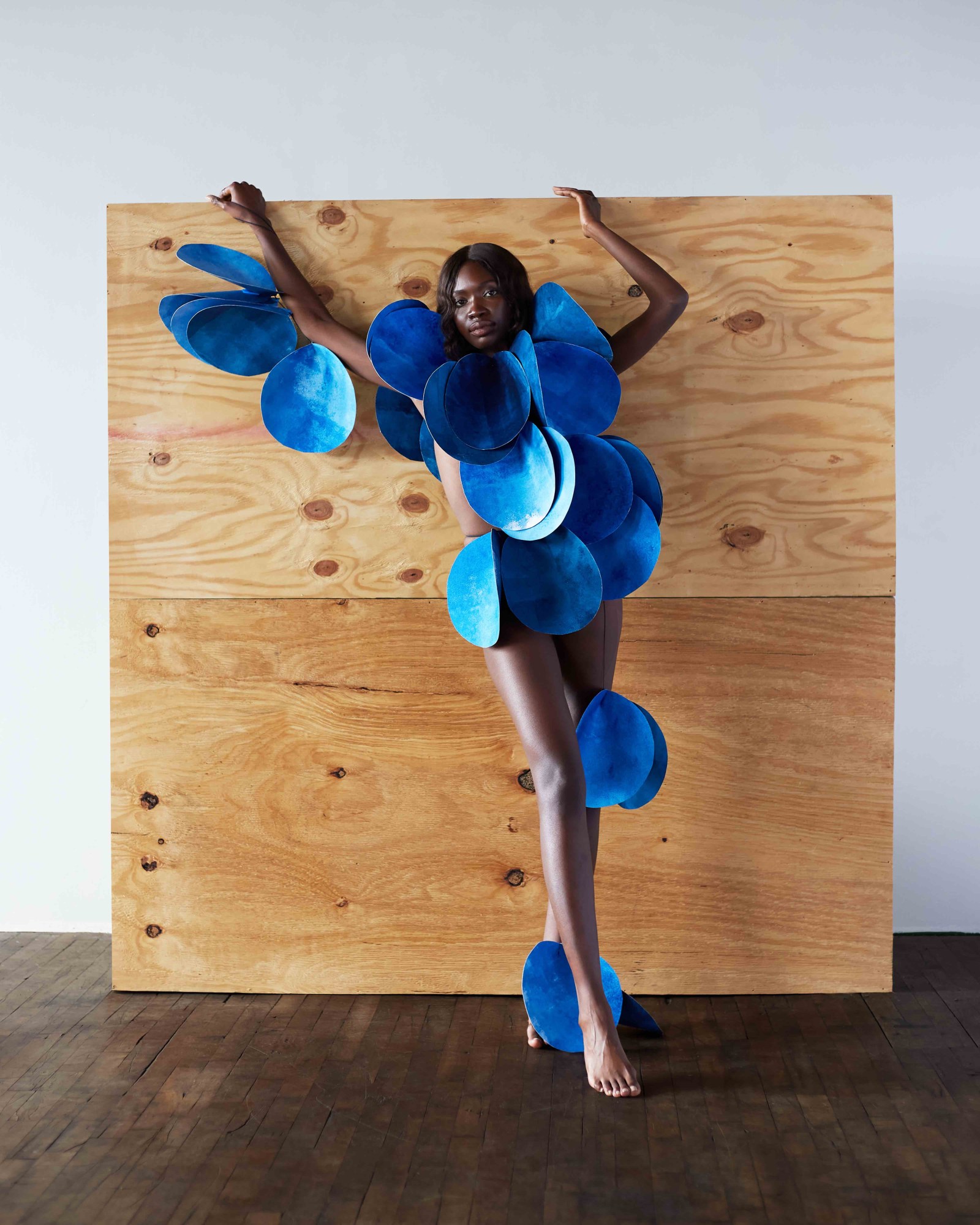
What nuances or tensions are you finding as you navigate the creative landscape as a Black creator?
I do feel as a Black womxn artist I am constantly being asked to prove myself in a way that goes beyond what my white counterparts are asked to deliver. I can go to an art show in Paris with numerous predominantly white and male artists on display and anything goes — it’s all valid and a moment worth pondering. I find as a Black creator I have to constantly prove my brilliance, while “Brian” is valid no matter how he shows up. The double standard is unattractive and racist. It’s also quite an opposite experience when it comes to being able to freely explore in my creative practice vs an individual who benefits from white and male privilege and therefore knows they will always have a foot in the door no matter what.
